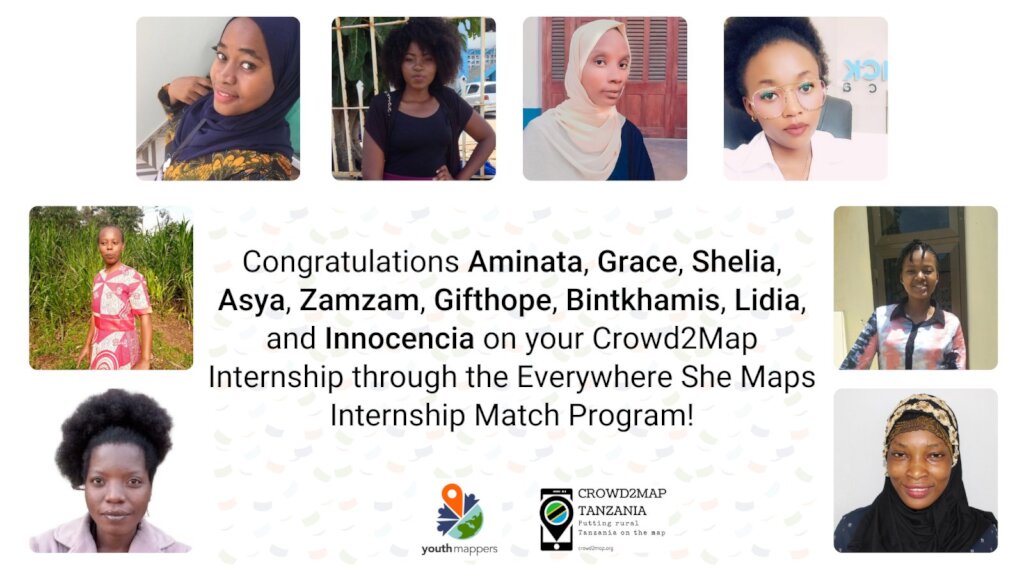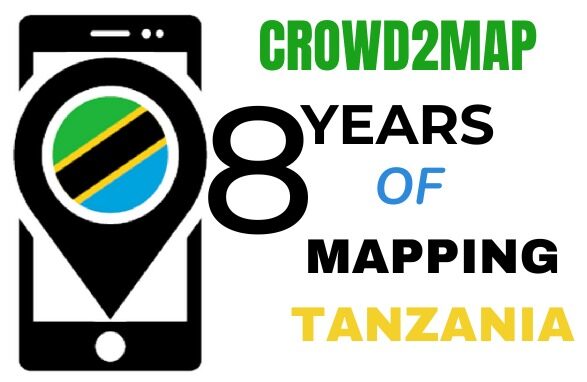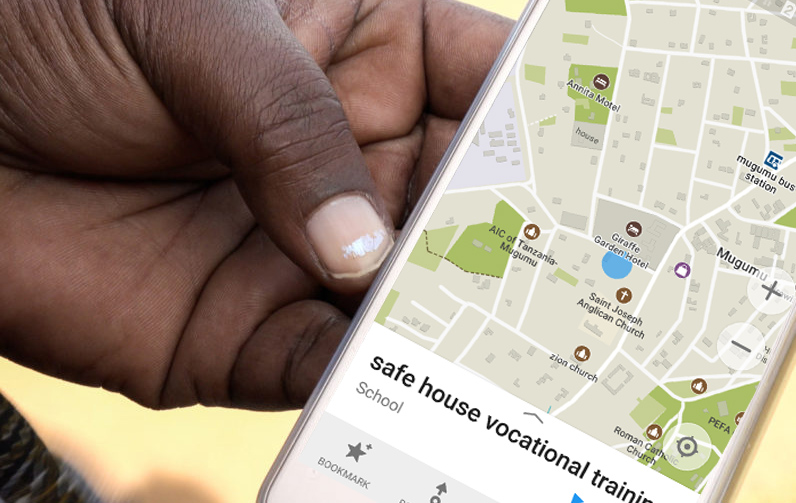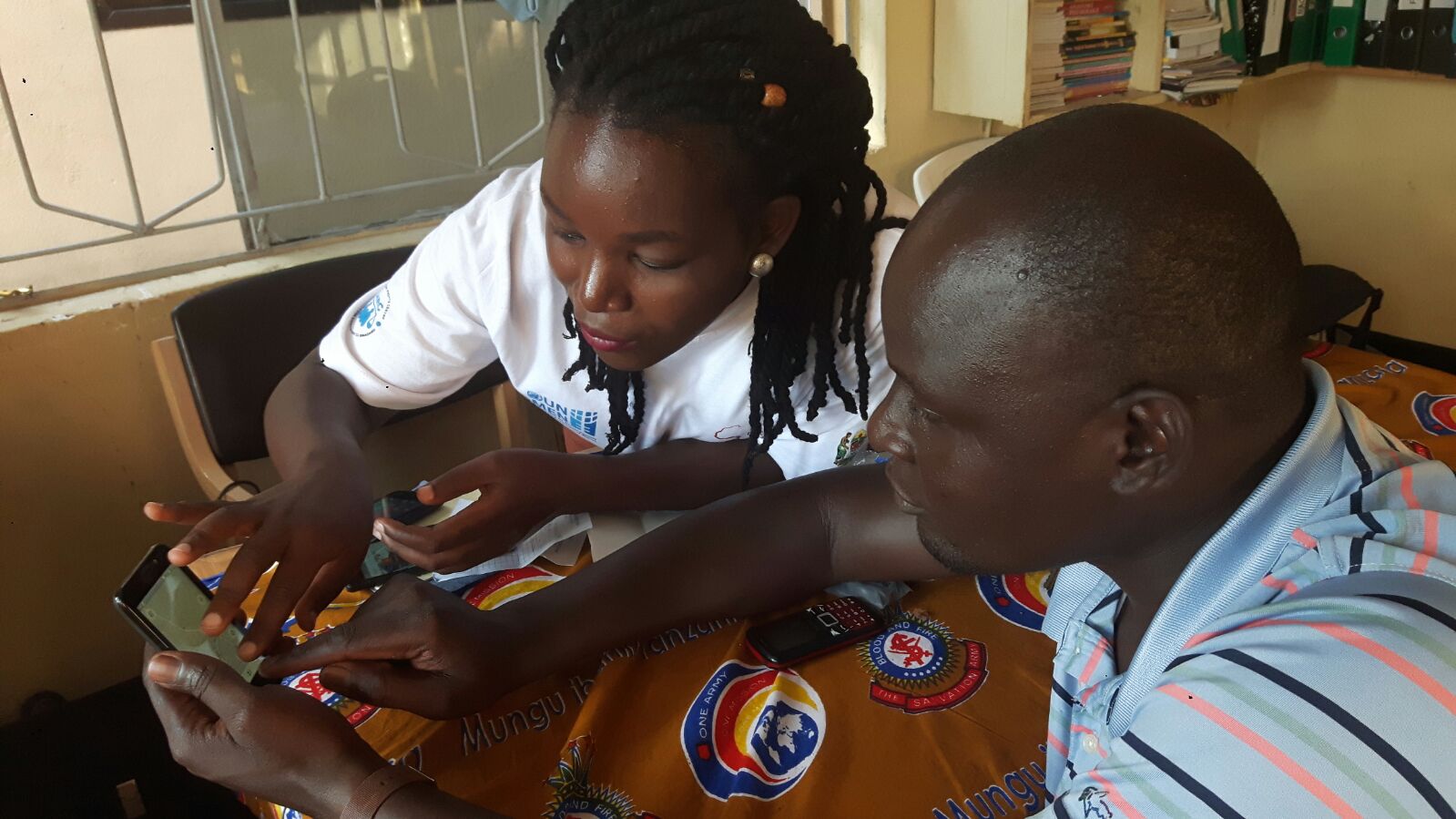Imagine that you are able to look down from a great height, over any region of the world, and view villages and farms in great detail. You might see, for example, what appears to be a well-trod footpath that bypasses a shed or a goat pen, or a building tagged as a school but with no playground or soccer field. You see no paved roads or sidewalks. What would it be like to exist in this world that you are viewing?
Mapping on OpenStreetMap (OSM) offers a challenge. But anyone who has experienced it can testify to how it magically takes us to unfamiliar corners of the world to peer into remote towns and villages. It offers us a view into the lives of people who not only look different from ourselves but who might also be living on the edge of starvation. In a humanitarian context, the experience of mapping can be transformational, especially when used to help at-risk populations, such as the young women of Tanzania.
Mapping to End Female
Genital Mutilation
Although the practice of female genital mutilation (FGM) remains illegal in Tanzania, many young Tanzanian females, especially those living in remote regions of the country, are subjected to this practice. This past September, Janet Chapman gave a presentation at the State of the Map (SOTM) Conference in Heidelberg, Germany, on the progress being made on Crowd2MapTanzania.
One of Crowd2Map’s primary goals is to protect girls against FGM, and the initiative has made remarkable progress. Nearly 12,000 volunteers around the world have already added 3.6 million buildings to OpenStreetMap (OSM), using satellite images to trace buildings. These remote volunteers access the Slack Channel, which now has 3,000 members, to ask questions or receive feedback. On the ground in Tanzania, over 1,600 activists use smart phones to add villages, schools, hospitals, clinics, offices, shops, churches, and safe houses to the OSM maps.
As a Trustee of Tanzania Development Trust and its Communications Manager, Janet has been spending at least two months a year in Tanzania for the last six years. From her time on the ground, it was clear to her that mapping was badly needed. So, in November 2015, she founded Crowd2Map Tanzania to protect Tanzanian girls from FGM but also to promote community development.
Past efforts to provide protection and support to girls at risk of FGM have always been greatly “hindered by lack of mapping,” Janet noted, and that lack has made regional travel difficult. “Without maps, young Tanzanian girls cannot find safe houses, and sanctuary from FGM practices. And safe house staff members and police officers cannot find girls at risk for FGM.”
One of the principal activists on the ground in Tanzania is Rhobi Samwelly, who set up the Mugumu Safe House, where girls can find safety and support. Rhobi herself could have died from FGM. “When she was cut at the age of 13, Rhobi almost bled to death,” Janet told her audience in Heidelberg. “Her girlfriend had been cut and she died, and her body was left in bushes surrounding the village.”
Because it is illegal, the practice of cutting is largely performed without medical personnel present. Rhobi’s ultimate goal is to place an activist in all villages, so that the village activist can become someone girls at risk will turn to for protection and transport to a safe house. For further information about FGM, see 28toomany.org/country/tanzania.
State of the Map (Heidekberg 2019)
Like other 2nd generation World Wide Web tools, OSM draws much of its influence from community participation around the globe. Representatives from humanitarian, recreational, governmental, and academic attended the 2019 State of the Map Conference in Heidelberg to present their work and share their concerns.
“I’ve been involved in the OSM community for four years now,” reports Janet Chapman, and it was fantastic to meet up with people in Heidelberg who I generally only see once a year at such events and find out how their work is progressing.
“Plus, I had the opportunity to meet new people who are also doing amazing things, she added. “One of the projects we are most interested in is the use of machine learning to speed up the mapping process. We have already set up some pilot projects and are excited about the results. We will start rolling this out soon, on wider basis.”
Before exploring how machine learning, (a type of artificial intelligence based on patterns and inference, using algorithms and statistical models) will transform mapping, let’s briefly review some of the numerous OSM mapping projects presented at the SOTM Conference.
Cycling
Those interested in urban and touring biking had excellent opportunities to connect, learn, and share concerns. For instance, a group of activists from Medellin, Columbia, shared their work on mapping the cities of the Aburrá Valley, with Medellin as a core city. Drawn in part from the GEOLab Research group at the University of Antioquia, these cycling activists are using OSM to map existing infrastructure and provide visualization of safety data (including air quality), with the goal of making cycling safer and more attractive.
Likewise, representatives from Nomad Maps talked about their goal of creating a community of “NomadMappers” in Columbia, Ecuador, and Peru. They will map on both OSM and Mapillary in order to assist cyclists in their travels across the Andes Mountains.
Members of CyclOSM presented their cycling render of Paris, which built on the excellent quality of OSM’s Paris data. Their work differentiates bidirectional ways and dedicated lanes versus shared lanes (bike lanes are often indistinguishable from car lanes), and also pinpoints bumps and bike boxes.
Indoor
and Outdoor Walkways
Mapping pedestrian walkways and paths presents challenges. Hikar, an augmented reality app for Android, is experimenting with the use of augmented reality in conjunction with OSM. Once restricted to England and Wales, Hikar now covers Europe and shows distance and direction.
On-the-ground navigation for those with mobility impairments, presents a different sort of challenge. In England, the Stockport Council initiated the ‘Mapping Mobility Stockport’ project to address navigation barriers to individuals with vision impairments or wheelchairs. They collaborated with community members to develop strategies for negotiating such barriers, thus transforming the project into a share community effort.
The French railway company SNCF has created a dedicated routing engine to navigate indoors and outdoors at 83 train stations in Paris. SNCF has also incorporated landmarks (replacing certain written instructions) onto their railway station maps.
Public Transportation
SNCF has adapted GraphHopper, used primarily for graph-based car, pedestrian, and bike navigation, to work with OSM rail data. SNCF calls their initiative OpenRailRouting, and it has resulted in upgraded services, such as delay calculations, tunnel positioning, and distance calculation.
In Norway, Entur maintains a national registry of data for 60 public transportation operators, using OSM as a foundation for routing. Entur plans to broaden its scope to all of Europe and will continue to build on its use of OSM, OpenTripPlanner, and other open-source platforms to do so.
Community
Development and Disaster Preparedness
In central Scotland, the Falkirk Council used OSM to create Our Falkirk. Poverty estimates run as high as 25% in Falkirk, and their map-based tool provides information to the community on local services that provide social support, food supplies, financial advice, and digital access.
OSM is being used to determining the need for bridge infrastructure in the Kingdom of eSwatini. To determine the need for additional bridges, the region’s baseline accessibility (to a bridge) is compared to its accessibility during a flood or rising water levels. Similarly, OSM is being used in Nepal and in the Philippines, to strengthen disaster preparedness.
Artificial and learned intelligence
Support Each Other on OSM
The inclusion of the Academic track in the annual SOTM Conference provides a look at some interesting research on the effects of mapping on volunteers, using YouthMappers as subjects. According to Patricia Solis, such research suggests that the humanitarian nature of many mapping tasks often softens the grinding task of learning a new technology, making it a more compelling challenge. Because humanitarian mapping often awakens volunteers to the ordeals in other people’s lives, the experience itself often leads to more positive outcomes, such as satisfaction or a newly found interest in technology. Research also indicates that the experience of mapping helps develop valuable geospatial skills in young people, skills may help them land an internship or job offer, according to Patricia Solis and Sushil Rajagopalan. They indicated that the effects are particularly strong for females.
Equipping a younger generation with geospatial skills, already highly valued in the marketplace, may be greatly enhanced by the expansion of OSM’s functionalities with machine learning. In July of 2019, Facebook released Map With AI, which is now available to OSM and provides access to Tanzania (as well as Mexico, Nigeria, Uganda, Indonesia, Bangladesh, and Afghanistan).
Map With AI comes with an AI-powered OSM editing tool called RapiD, which acts as its interface. Like flipping a switch to turn on the overhead lights, mappers will use RapiD to review the model’s identified navigation patterns of paved and unpaved roads and paths (as opposed to dried up riverbeds) and highlight them on OSM. The identified, or “predicted,” roads and paths are given a confidence rating, which is expressed as a magenta overlay. Existing roads show up with a white overlay.
Tested by Facebook and OSM reviewers on 300,000 miles of unmapped roads in Thailand, the Map With AI has been shown to accelerate the process of road mapping. Given the extent of the numerous mapping projects, and the education it is providing in geospatial skills, Facebook’s AI model can only enhance and accelerate OSM’s crowdsourcing work around the globe.






